Occupational Safety Training for Operating Buses
99,000 ₫
Note: The above price is calculated per person and may vary depending on the number of trainees participating in the course and market fluctuations. For more accurate pricing support, please refer to the pricing list or contact our consulting staff directly.
Occupational safety is an important issue when operating a bus and needs to be addressed promptly to ensure the health and safety of workers and enhance the reputation of businesses here. The Occupational Safety Training is one of the effective solutions to raise awareness on how to prevent occupational accidents for workers operating a bus.
Table of Contents
Toggle1. Overview of the Bus
a. What is a Bus?
A bus, commonly referred to simply as a “bus,” is a public transportation vehicle designed to carry a large number of passengers along fixed routes. Buses are usually large in size, capable of transporting many passengers, and are widely used in cities and urban areas worldwide.
Buses can vary in size, design, and function depending on the specific operational needs of each locality. However, some common characteristics of buses include:
- Passenger seating: Buses typically have a large number of seats for passengers. There may be standing or reclining areas depending on the specific design of each bus type.
- Entry and exit doors: Buses usually have multiple doors allowing passengers to board and alight easily from various sides of the vehicle. Doors can be automatic or manually operated.
- Payment system: To use the bus service, passengers typically pay a fare or use smart cards or cash cards to pay for tickets.
- Fixed routes: Buses operate on fixed routes with designated stops. Usually, there is a fixed schedule for each route so passengers can know the expected bus arrival times.
- Operational management: Bus services are generally managed by public transport authorities or companies and must comply with traffic safety regulations and service quality standards.
In some cases, buses may be adapted to meet specific needs such as extended-route buses for long-distance travel, highway buses, or buses powered by renewable energy to minimize environmental impact.

b. Operating Principle of the Bus
- Engine:
- In most cases, buses use internal combustion engines (diesel engines) or electric motors.
- Diesel engine: The bus gains power from a conventional diesel engine, running on diesel fuel. The fuel is burned in the combustion chamber to generate mechanical energy.
- Electric motor: Electric buses use electric motors to generate power. Energy is supplied from batteries or external power sources, and the motor drives the wheels through a transmission system.
- Transmission system:
- In buses with internal combustion engines, energy from the engine is transmitted to the wheels through a transmission system, including the gearbox, driveshaft, and sometimes a transfer case.
- In electric buses, the electric motor directly supplies power to the wheels through a transmission system, often a screw drive or electronic drive system.
- Steering and braking systems:
- The steering system of the bus is similar to that of other vehicles, allowing the driver to control the direction of travel.
- The braking system includes mechanical brakes or electric brakes, depending on the bus type. Mechanical brakes use friction between the wheels and disc or drum brakes to reduce speed, while electric brakes use regenerative braking to convert kinetic energy into electrical energy stored in batteries or power systems for later use.
- Suspension and chassis systems:
- The suspension system helps reduce shocks and allows the bus to travel smoothly on uneven road surfaces.
- The chassis system includes components such as tires, frame, and other parts that support the vehicle’s weight and enhance stability.
c. The Role of Buses in Urban Transportation Development
Buses play an important role in the development of urban transportation and affect many aspects of city life. Below are some key roles of buses:
- Primary form of public transportation:
- Buses are a key part of official public transportation systems in major cities. They provide easy and convenient mobility for urban residents, helping to reduce personal vehicle use and lower environmental pollution.
- Saving urban space:
- Compared to personal cars, using buses helps reduce air pollution and parking pressure in urban areas. One bus can carry many passengers, saving space compared to many individual cars.
- Convenience and cost savings for residents:
- Buses provide a safe, convenient, and affordable public transport option for urban residents. Compared to owning and maintaining a car, taking the bus often saves costs, especially for people who do not need to use a car daily.
- Reducing traffic congestion and pollution:
- Buses help reduce congestion and pollution by lowering the number of personal vehicles on the streets. When more people choose buses over cars, fewer vehicles are on the road, helping ease traffic jams and reduce emissions from private vehicles.
- Supporting transportation infrastructure:
- Using buses can help reduce the load on transportation infrastructure, maintenance of roads, bridges, and tunnels. This helps keep urban transport infrastructure maintained and functioning more efficiently.

2. Overview of Safety Training for Bus Operation
a. What is Occupational Safety Training?
- Occupational safety training for bus operation consists of sessions that provide workers with awareness of how to prevent workplace accidents. Workers directly involved with bus operation belong to Group 3.
- The safety training course helps workers recognize and avoid hazards, reducing the risk of occupational accidents during work.
REGISTER FOR OCCUPATIONAL SAFETY TRAINING SERVICE
b. Training Duration
Initial safety training duration:
- Total training time is at least 24 hours, including exam time.
- 8 hours of theory on policies and laws related to occupational safety and hygiene.
- 8 hours of theory on basic knowledge of occupational safety and hygiene.
- 4 hours of theory on specialized training content.
- 2 hours of practical training on specialized content.
- 2 hours of theory exam at the end of the course.
The safety training center will arrange the schedule in multiple sessions depending on workers’ availability. Typically, there are 6 sessions held over 3 days, provided the company arranges continuous learning time.
Periodic safety training duration:
- Before the occupational safety card expires, workers must undergo periodic safety training lasting at least 50% of the initial safety training duration to renew their card.
Explanation: The total time for periodic occupational safety training is at least 12 hours, including exam time. After completing the periodic training and passing the exam, workers will have their occupational safety cards reissued or extended.
c. Training Course Content
| No. | TRAINING CONTENT | TRAINING DURATION (HOURS) | |||
| Total | Including | ||||
| Theory | Practice | Exam | |||
| I | System of policies and laws on occupational safety and hygiene | 8 | 8 | 0 | 0 |
| 1 | Overview of the legal documents system on occupational safety and hygiene. | 6 | 6 | ||
| 2 | System of standards and technical regulations on occupational safety and hygiene. | 1 | 1 | ||
| 3 | Specific regulations of state management agencies on occupational safety and hygiene in construction, expansion, or renovation of works and facilities for production, use, storage, and inspection of machines, equipment, materials, and substances with strict safety and hygiene requirements. | 1 | 1 | ||
| II | Basic knowledge of occupational safety and hygiene | 8 | 8 | 0 | 0 |
| 1 | Basic knowledge of hazardous and harmful factors in the workplace. | 4 | 4 | ||
| 2 | Methods to improve working conditions. | 1 | 1 | ||
| 3 | Safety culture in production and business. | 1 | 1 | ||
| 4 | Rights and obligations of employers and employees; policies and regimes on occupational safety and hygiene for workers; functions and duties of safety and hygiene staff. | 1 | 1 | ||
| 5 | Occupational safety rules, signs, instructions, use of safety equipment and personal protective equipment; skills in first aid for occupational accidents and prevention of occupational diseases. | 1 | 1 | ||
| III | Specialized training content | 6 | 4 | 2 | 0 |
| Comprehensive knowledge about types of machines, equipment, substances generating hazardous and harmful factors; risk analysis, evaluation, and management of occupational safety and hygiene; safe working procedures with machines, equipment, and substances requiring strict safety and hygiene. | 6 | 4 | 2 | ||
| IV | Safety training final exam | 2 | 2 | 0 | 0 |
| Total | 24 | 22 | 2 | ||
See more about training content of 6 groups
d. Occupational Safety Card
After completing the occupational safety training course and passing the exam, workers will be issued an occupational safety card (commonly called the occupational safety certificate for Group 3).
The Group 3 safety card clearly displays information such as full name, date of birth, specific job and work environment. It also includes training duration, an official red stamp, and a signature confirming course completion.
According to regulations on issuing safety cards stated in Clause 2 of Article 24 of Decree 44/2016/ND-CP, there are two cases:
- If the employer and employee have a labor contract, the employer must sign, stamp, and endorse the safety card for Group 3 workers after they complete training from an occupational safety training unit and pass the exam.
- If the worker is freelance, seasonal, or does not have a labor contract, the training unit must sign, stamp, and endorse the safety card after the worker completes training and passes the exam from the occupational safety training unit.

3. Hazards for Workers Operating Buses
- Traffic accidents: Traffic accidents are a major hazard for bus drivers. Operating in busy urban environments and facing various traffic situations can pose high risks to both drivers and passengers.
- Environmental pollution: Bus drivers often work in polluted environments, especially in large cities. Diesel engine exhaust and traffic noise can cause health problems for drivers after long periods of work.
- Time pressure: Bus drivers usually have to work according to fixed schedules and may face time pressure to complete trips on time. This pressure can cause stress and fatigue.
- Dealing with difficult passengers: Bus drivers often encounter passengers with difficult attitudes, conflicts, and other awkward situations. This can create stress and increase the risk of conflicts with passengers.
- Social and security factors: In some cases, bus drivers may face social and security issues such as violence from passengers or situations requiring intervention from local security forces.
- Health issues: Working in polluted environments and sitting for long periods can cause health problems such as back pain, muscle tension, and other health issues for drivers.

4. Measures to Control Occupational Accidents When Operating Buses
- Training and education:
- Provide in-depth training for drivers on safe driving skills, efficient driving techniques, safety procedures, and emergency response.
- Train drivers on handling difficult passengers and special traffic situations such as bad weather, slippery roads, or road construction zones.
- Regular vehicle maintenance and inspection:
- Conduct regular maintenance and inspections of buses to ensure they operate safely and efficiently.
- Regularly check brake systems, steering, lighting, and other safety systems to ensure they function properly.
- Periodic inspection of buses to detect safety issues such as damage, wear, or mechanical failures early, thereby reducing the risk of occupational accidents.
- Supervision and monitoring of driver activities:
- Closely monitor and track drivers’ activities via GPS systems, dash cameras, or other systems to ensure compliance with traffic regulations and safety procedures.
- Providing safe working conditions:
- Provide drivers with safe and comfortable working conditions, including comfortable seats, efficient cooling and heating systems, and protective measures to minimize the impact of environmental pollution.
- Promoting a safety culture:
- Build and promote a safety culture within the organization by creating a work environment where everyone values safety and adheres to safety regulations.
- Organize programs to raise occupational safety awareness and conduct regular safety training for all personnel involved in bus operations.
- Establishing an accident reporting system and learning from experience:
- Set up an accident and incident reporting system to collect data and analyze the causes of accidents.
- Use the collected data to improve operational procedures and implement corrective measures to prevent similar accidents in the future.

5. Benefits of Occupational Safety Training
An Toàn Nam Việt provides your company with the following excellent benefits after completing occupational safety training courses according to the regulations in Decree 44/2016/ND-CP on Occupational Safety and Hygiene, for companies, factories, and enterprises.
- Workers can recognize potential risks of occupational accidents and take preventive measures to avoid accidents.
- Your company can establish risk prevention measures in production, operation, and maintenance processes.
- Reduce costs related to occupational safety incidents.
- Uninterrupted production processes help increase labor productivity and product quality.
- Comply fully with occupational safety laws to avoid legal risks.
- Create credibility and professionalism in all aspects, thereby enhancing your company’s brand.
Nam Việt’s training courses are solutions to prevent and combat external factors that impact individuals, helping them avoid dangers that may cause injury or even death.
REGISTER FOR OCCUPATIONAL SAFETY TRAINING SERVICE
6. Customer Feedback After Completing Training Courses
An Toàn Nam Việt has many years of experience accompanying numerous businesses in Vietnam in general and in southern provinces in particular. This responsibility is very precious to Nam Việt, which is why its Occupational Safety Training service is increasingly professional. The motivation for Nam Việt’s growth comes from positive feedback and suggestions from our business partners. Below are testimonials from our valued clients.
Bac Nam E&C Joint Stock Company
“Using An Toàn Nam Việt’s service for the first time, I was very impressed by the 24/7 enthusiastic support from the consulting team. The class organization was fast and convenient for our company. Thank you very much for Nam Việt’s service!”
Hoa Dat Construction and Trading Joint Stock Company
“Nam Việt’s service helped us greatly in simplifying occupational safety and completing safety dossiers for work processes. The consulting team was enthusiastic and timely in addressing our questions. Five stars for Nam Việt.”
See more customer interviews after using An Toàn Nam Việt’s services
7. An Toàn Nam Việt’s Occupational Safety Training Capacity
An Toàn Nam Việt is a reputable and quality occupational safety training center in Vietnam today. Our training sessions are held continuously at manufacturing workshops, factories, or construction sites nationwide (all 63 provinces in Vietnam).
REGISTER FOR OCCUPATIONAL SAFETY TRAINING SERVICE
Occupational Safety Training License
- An Toàn Nam Việt has been inspected and certified by the Department of Safety under the Ministry of Labor, Invalids and Social Affairs as qualified to conduct occupational safety and hygiene training. This strengthens our capacity to operate occupational safety training.

Training Materials and Lectures
- Before being used in occupational safety training courses, training materials are reviewed and approved to ensure accuracy and effectiveness.
- Our instructors’ teaching methods are standardized according to An Toàn Nam Việt’s standards, developed by experts in occupational safety and hygiene training to maximize knowledge absorption.
Facilities
- Controlling environmental factors in classrooms improves teaching efficiency and learners’ knowledge absorption.
- Our training facilities always provide spacious classrooms meeting standards for area, lighting, and training equipment, etc.
8. Nationwide Reputable Quality Safety Training Center
At An Toàn Nam Việt, we always prioritize occupational safety training as our top professional commitment. For us, imparting self-protection knowledge to workers to equip them for safe livelihoods contributes to national development.
To ensure effective training, we carefully and meticulously prepare every detail, from tools, teaching equipment, curriculum, materials, audio, and lighting.
Our occupational safety instructors are experts with many years of experience in the field. They even have research projects on identifying hazards across industries and ways to prevent them.
Our lectures are practical and delivered vividly and understandably to workers. These factors help learners feel comfortable during study and absorb knowledge effectively. Of course, the knowledge conveyed always aligns with Decree 44/2016/ND-CP.
Thus, learners grasp many preventive measures against hazards and how to protect themselves, applying them suitably in their actual work.
Our training center proudly provides reliable, professional occupational safety training services with the following advantages:
- Competitive training costs while ensuring quality.
- Flexible training schedules adapted to the company’s production situation.
- Fast and legally compliant procedures for issuing occupational safety training certificates.
- Experienced instructors with many years in the profession.
- Classrooms controlled for environmental factors to enhance teaching efficiency and learner knowledge absorption.
- Training materials tailored to occupational safety tasks at enterprises.
- An Toàn Nam Việt works dedicatedly and professionally to support customers accurately and promptly.

9. Additional Occupational Safety Training Materials
- Occupational Safety Training Document Set
- Occupational Safety Documents for Bus Operation
- Occupational Safety Training Test Set
- Occupational Safety Multiple-Choice Test for Bus Operation
- Occupational Safety Training Slides for Bus Operation
No comments yet


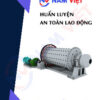
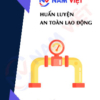




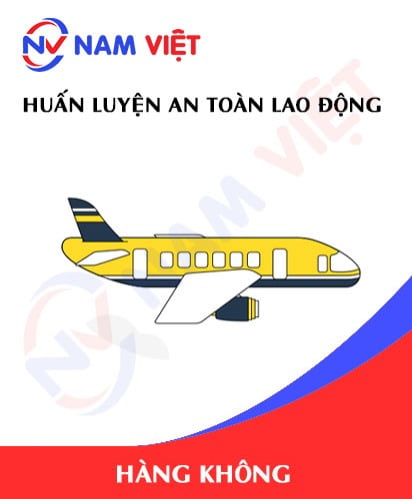
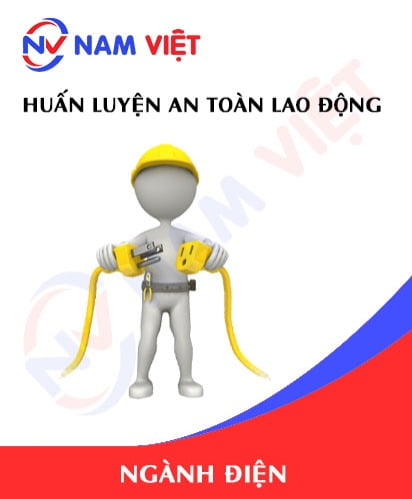

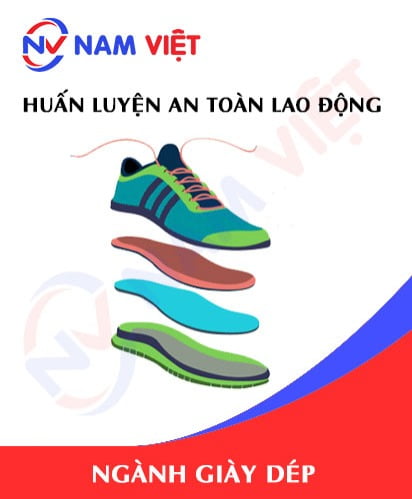

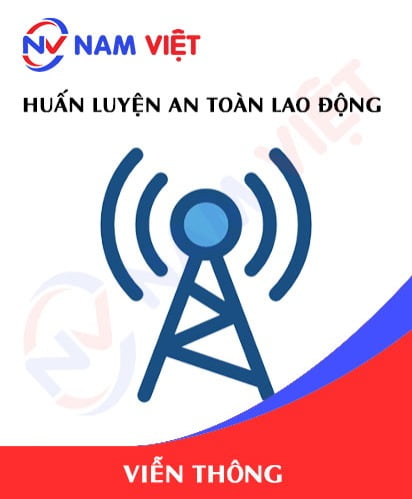
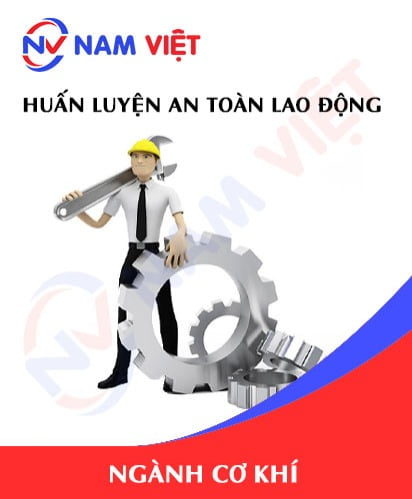
Review Occupational Safety Training for Operating Buses
There are no reviews yet.